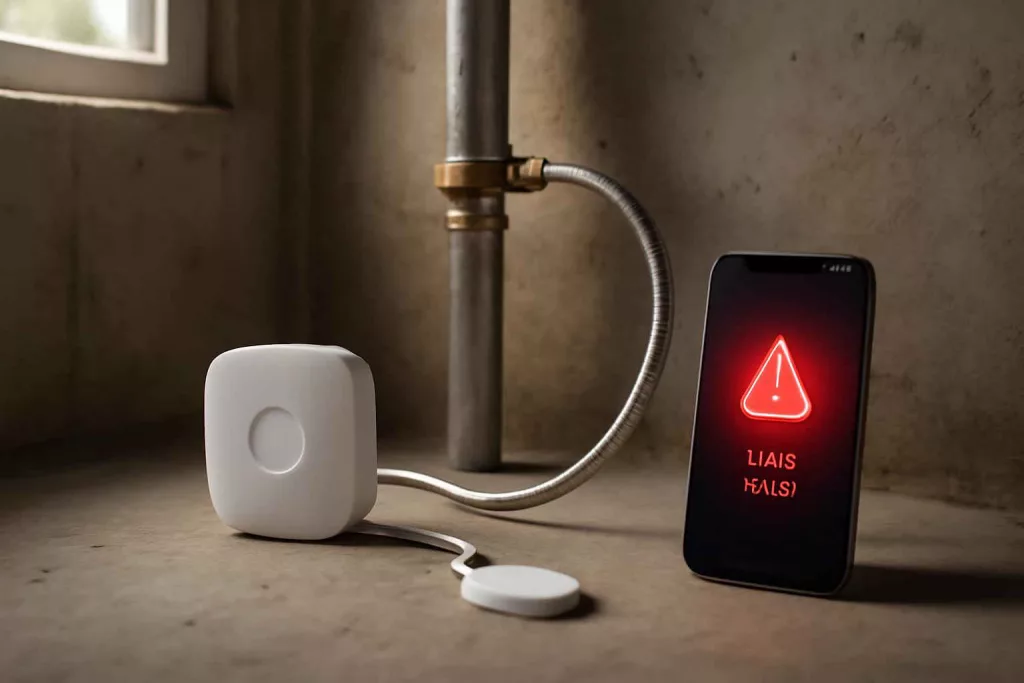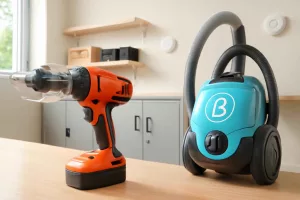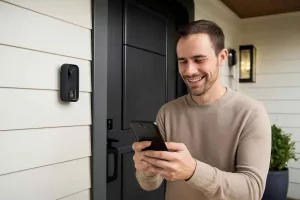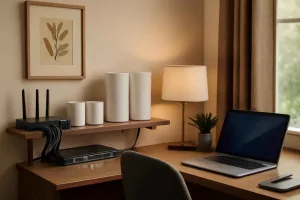Water damage can happen when you least expect it, turning a cozy home into a costly repair project in a matter of hours. Smart water leak detectors bring peace of mind by alerting you instantly to unwanted moisture buildup. In this guide, we’ll explore the benefits of installing a smart water leak detector, walk through how these devices operate, and share our top picks for flood prevention.
Why You Need a Smart Water Leak Detector
Traditional leak detection methods rely on manual checks and visual inspections, which often catch problems only after damage has begun. A smart water leak detector uses sensors placed near pipes, appliances, or in basements to monitor moisture levels continuously. When a leak or unusual humidity is detected, the device sends an instant notification to your smartphone, enabling you to act before water spreads and causes structural or mold damage.
For homeowners in regions prone to freezing temperatures, some smart detectors also include freeze sensors that alert you when temperatures drop to a level where pipes may burst. Integrating a freeze sensor means you’re protected not only from leaks but also from cold-related failures—a critical feature for basement and crawl space protection.
How Smart Leak Detectors Work
At the core of every smart leak detector is a moisture sensor—typically two gold-plated probes or flexible conductive strips—that complete an electrical circuit when water bridges the gap. Once moisture is detected, the sensor triggers an onboard processor which then communicates the alert to your home network.
Connectivity Options
Most modern leak detectors support Wi-Fi, allowing direct integration with your home network and smartphone app. Others use Zigbee or Z-Wave protocols, requiring a compatible smart home hub. Choosing the right connectivity ensures reliable alerts and allows integration with broader smart home systems.
Mobile App Notifications
Smartphone alerts are the primary benefit of these devices. Real-time push notifications let you know the exact location of the leak, whether it’s under your kitchen sink, around your water heater, or in the basement. Many apps also log historical data on moisture incidents, helping you identify recurring trouble spots.
Factors to Consider When Choosing a Smart Leak Detector
Selecting the right model involves more than price. Below are key factors to guide your decision:
1. Sensor Type and Coverage
Some detectors use rigid probes, while others feature long, flexible cables that can snake under appliances or along pipes. Flexible sensor cables are ideal for covering large areas or around irregular surfaces, while rigid probes suit tight spaces and specific points of interest.
2. Power Source and Battery Life
Battery-powered detectors offer installation flexibility but require periodic battery replacements. Look for models with multi-year battery life or low-battery alerts. Hardwired units ensure continuous power but may need professional installation.
3. App and Ecosystem Integration
Ensure compatibility with your existing smart home ecosystem. If you already use devices like the ones featured in our Best Smart Smoke and Carbon Monoxide Detectors for Home Safety guide, selecting a leak detector within the same app ecosystem can simplify management.
4. Freeze-Protection Features
For homes in colder regions, freeze sensors are a game-changer. They notify you when temperatures approach freezing, giving you time to heat the area or turn off water supply before pipes burst.
5. Automatic Shutoff Valve Compatibility
Advanced setups connect leak sensors to an automatic shutoff valve. When a leak is detected, the valve closes the main water line, preventing thousands of dollars in damage. If flood prevention is your top priority, look for leak detectors supporting valve integration.
6. Price and Warranty
Prices range from budget-friendly standalone sensors to premium kits with multiple probes and shutoff valves. Factor in warranty length and customer support reputation to ensure long-term reliability.
Top 5 Smart Water Leak Detectors
After researching user reviews, expert recommendations, and lab test results, we narrowed down our top picks:
1. MoesHome Wi-Fi Water Leak Sensor
The MoesHome sensor combines Wi-Fi connectivity with a compact design. It features a 6.5-foot sensor cable, low-battery alerts, and supports Alexa and Google Assistant. Its bidirectional aluminum probes ensure prompt detection, and replacement batteries last up to three years.
Shop MoesHome Wi-Fi Water Leak Sensor
2. Honeywell Home Lyric W1
Known for reliability, the Lyric W1 integrates seamlessly with the Honeywell Home app. It features a wireless probe with a 10-foot sensor cable and can pair with the Lyric water shutoff valve for automatic flow control. The app logs events and provides location-based notifications.
3. Fibaro Flood Sensor
A Z-Wave device ideal for users with a smart home hub, the Fibaro Flood Sensor offers a sleek design with built-in temperature monitoring. It delivers notifications through popular hubs like Samsung SmartThings, Hubitat, and Home Assistant. Its replaceable CR123A battery lasts up to two years.
4. Govee Wi-Fi Water Leak Sensor
Govee’s budget-friendly option features Wi-Fi connectivity and a 20-inch sensor cable. The H5051 model offers IP67-rated probes, in-app sound alarms, and third-party integrations via IFTTT. Battery life extends up to two years under typical conditions.
Shop Govee H5051 Wi-Fi Water Leak Sensor
5. Basement Watchdog SmartSump 2
Designed specifically for basement flood prevention, the SmartSump 2 connects to a sump pump and cloud dashboard. It monitors pump activity, water levels, and power status. When combined with the Basement Watchdog Wi-Fi accessory, you receive instant alerts on pump failures or high water levels.
Shop Basement Watchdog SmartSump 2
Installation and Placement Tips
Proper placement is crucial for effective water leak detection. Follow these guidelines:
Identify High-Risk Areas
Common leak sources include water heaters, dishwashers, under-sink plumbing, washing machines, and basements. Place a sensor under or beside these appliances. Use flexible sensor cables to cover corners and extend coverage under the entire unit.
Secure Mounting
Many sensors come with adhesive pads or mounting brackets. Ensure the sensor probes make firm contact with the floor or surface. Avoid placing on thick rugs or elevated platforms, which can delay detection.
Test Before Use
After installation, test your detector by placing a few drops of water on the probes. Confirm that the app sends an alert and any integrated sirens or alarms activate. Regularly test every six months to maintain reliability.
Consider Multiple Sensors
Large basements or sprawling utility areas may require several sensors. Some systems allow multiple detectors to pair with a single hub or app, giving you comprehensive coverage without extra accounts.
Integrating with Smart Home Systems
Smart leak detectors can become part of a larger home automation ecosystem. Here are popular integrations to consider:
Alexa and Google Assistant
Voice assistants can announce water leak alerts publicly in the home. For example, when a leak is detected, Alexa can issue a spoken warning to all connected Echo devices.
Smart Hubs
Z-Wave and Zigbee leak detectors connect to hubs such as SmartThings or Hubitat. Once integrated, you can create automation rules—like turning on a bathroom exhaust fan from our Best Smart Exhaust Fans for Bathroom Ventilation guide when humidity spikes or sending a notification if a leak sensor triggers.
IFTTT and Webhooks
If your sensor supports IFTTT, you can craft custom automations, such as sending a text message or email, activating a smart plug to power on a water pump, or triggering smart lights to flash red for a visual alert.
Maintenance and Troubleshooting
Keeping your leak detection system in top shape ensures long-term protection:
Battery Checks
Replace batteries annually or when the app notifies you of low power. Use high-quality lithium batteries for consistent performance in cold environments.
Sensor Cleaning
Dust and debris can insulate probes and delay detection. Wipe sensors with a damp cloth every few months, and ensure adhesive pads remain secure.
Firmware Updates
Manufacturers often release firmware updates to improve reliability. Check the device app regularly and apply updates promptly.
Troubleshooting Connectivity
If a Wi-Fi detector goes offline, move it closer to your router or consider a Wi-Fi extender. For Z-Wave/Zigbee devices, re-pair to your hub following the manufacturer’s reset procedure.
Conclusion
Investing in a smart water leak detector is one of the most cost-effective ways to safeguard your home against water damage and freezing pipes. By evaluating sensor coverage, connectivity, power options, and integration features, you can choose a system that meets your needs and budget. From the compact MoesHome Wi-Fi sensor to the robust Basement Watchdog SmartSump 2, our top picks cover a range of use cases. Proper installation, regular maintenance, and smart home integration will keep you one step ahead of leaks and help you sleep easier, knowing your home is protected.






